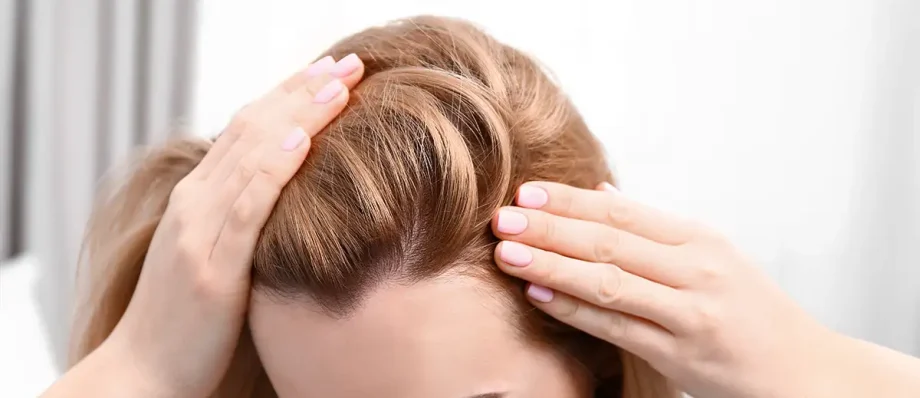Hair Transplant for Women in Turkey
Hair transplant procedure for women
Beautiful hair is an important element of one’s personality. Most women devote a lot of time to styling it every day. It is correspondingly dramatic when they suddenly fall out. Hair transplantation offers affected women permanent help. With modern hair transplantation, healthy hair is transplanted to the bald areas for lifelong, natural hair growth. The method has been tried and tested for many years and its success has been scientifically proven. In women, hair can be implanted not only on the crown and top of the head, but also on the eyebrows and eyelashes.
If you are interested in a hair transplant, the first step is a detailed consultation with one of our doctors. Talk to him about your hair loss, tell him your wishes and concerns and let him show you what you can expect from a hair transplant. Of course, you will not receive standard answers, but an individual consultation that is specifically tailored to your needs as a woman. The most important decision before a hair transplant is the choice of method. In each case, the hairline is determined together on the day of the operation. It marks the area from which your new hair should grow back.
The donor hair required for this is taken from a strip of skin, which is removed from the back of the head after a local anesthetic and twilight sedation. This area is crucial because the hair there grows in follicles whose receptors do not react to the hormones responsible for hair loss. This is why the transplanted hair remains active for life. Before the hair team begins with the implantation, the hairs are grouped and sorted in a nutrient solution so that the fine hairs are later used individually at the front of the hairline and the groups of two to four hairs ensure dense growth further up on the head. For this purpose, small channels are placed in the scalp, the angle of which matches the respective direction of hair growth.
Causes of female hair loss
Female hair loss, medically termed alopecia, can stem from a variety of factors. Hormonal changes play a significant role, especially during periods like pregnancy, childbirth, and menopause. Conditions like polycystic ovary syndrome (PCOS) can also disrupt hormone balance and contribute to hair thinning. Genetics can predispose some women to female pattern baldness, characterized by gradual hair loss, particularly around the crown and temples. Medical issues such as thyroid disorders, autoimmune diseases like alopecia areata, and scalp infections can also trigger hair loss.
Nutritional deficiencies, notably of iron, zinc, vitamin D, and protein, can weaken hair follicles and lead to increased shedding. Stress, whether emotional or physical, can induce a condition called telogen effluvium, where hair follicles enter a resting phase prematurely, causing excessive hair fall. Certain medications, such as those for cancer, arthritis, depression, and heart problems, may have hair loss as a side effect.
External factors like overuse of hair styling tools, harsh chemical treatments, and tight hairstyles can damage hair and contribute to hair loss. Aging is another factor, as hormonal changes and reduced hair follicle function can cause hair to become thinner and more brittle over time. Rapid weight loss or extreme dieting can also lead to nutritional deficiencies that affect hair health.
Additionally, lifestyle choices like smoking, excessive alcohol consumption, and poor sleep habits can negatively impact overall health, including the condition of one’s hair. Understanding the potential causes of female hair loss is crucial for seeking appropriate treatment and managing the condition effectively. Consulting with a healthcare professional or dermatologist can help identify the underlying cause and develop a personalized plan for addressing hair loss.
Methods for hair transplant in women
The strip method (FUT) is recommended so that the woman can perform her own hair transplant inconspicuously, because with this method it is unlikely that the procedure will be seen by others.
With the FUT technique, a strip of skin is removed from the back of the head, from which the hair to be transplanted is extracted. These hairs are then used individually, for example on the top of the head. There is almost no need to shave. After the operation, the suture under the upper long hair may disappear. An advantage that all patients with long hair will appreciate very much. However, patients who do not want to have their last hair or hair regrowth for treatment purposes also prefer the FUT procedure because it does not require any intervention in their hairstyle.
Of course, individual hair removal (FUE) directly from shaved skin on the back of the head is also possible. Due to shaving, this method is less popular in women with longer hair. In the FUE technique, an area on the back of the head is shaved where individual hairs are removed. The hairs are then prepared in a nutrient solution before being individually implanted.
Where can women have a hair transplant?
Women should go to a clinic specializing in hair surgery and hair transplantation that works with a permanent team of doctors and frequently performs hair transplants, including on women.
This is because it is even more important for women than for men to have a precise analysis of the cause of their hair loss before an implantation can be planned. Women’s hair loss is often caused by hormonal and medicinal triggers. These must first be stopped before an autologous hair transplant can be successfully started. Otherwise the new hair could also fall out.
Why travel to Turkey for a women’s hair transplant?
Hair transplant in Turkey is particularly popular among women due to its specialized techniques tailored to female hair loss patterns. These procedures prioritize natural-looking results and aim to restore confidence by addressing concerns such as thinning hair, receding hairlines, and bald patches.
Hair transplantation in Turkey, and especially in Istanbul, has become popular for individuals who are considering a hair transplant due to its many advantages. Firstly, hair transplant in Istanbul is performed with world-class facilities and highly skilled surgeons who specialize in hair transplantation. This expertise ensures that patients receive top-quality care and optimal results.
Secondly, Istanbul, one of the leading cities in hair transplant in Turkey, offers a unique blend of cultural experiences and modern facilities to patients coming to Istanbul thanks to its cosmopolitan features. Patients traveling to Istanbul for a hair transplant can enjoy exploring its rich history, vibrant markets, and stunning landmarks, making their treatment journey more enriching and memorable. Another key factor is the cost-effectiveness of hair transplant in Turkey compared to other countries. Since clinics in Turkey offer treatment options suitable for many budgets. Hair transplant cost in Turkey provides an advantage to people who cannot have hair transplantation due to costly prices in their own countries. Despite the affordable pricing, patients do not have to compromise on the quality of care or the expertise of the medical professionals, making Turkey an attractive option for those seeking effective yet affordable solutions for hair loss. Furthermore, the availability of advanced hair transplant techniques tailored to individual needs, including procedures specifically designed for women, adds to Turkey’s appeal as a premier destination for hair restoration.
In summary, choosing Turkey and Istanbul for a hair transplant offers a winning combination of world-class medical expertise, cultural richness, cost-effectiveness, and specialized treatments, making it a preferred destination for individuals looking to restore their hair and confidence. Overall, Turkey’s combination of expertise in hair transplant techniques, specifically for women, alongside the allure of Istanbul as a destination, and the cost advantage makes it a compelling option for those considering hair restoration procedures.


